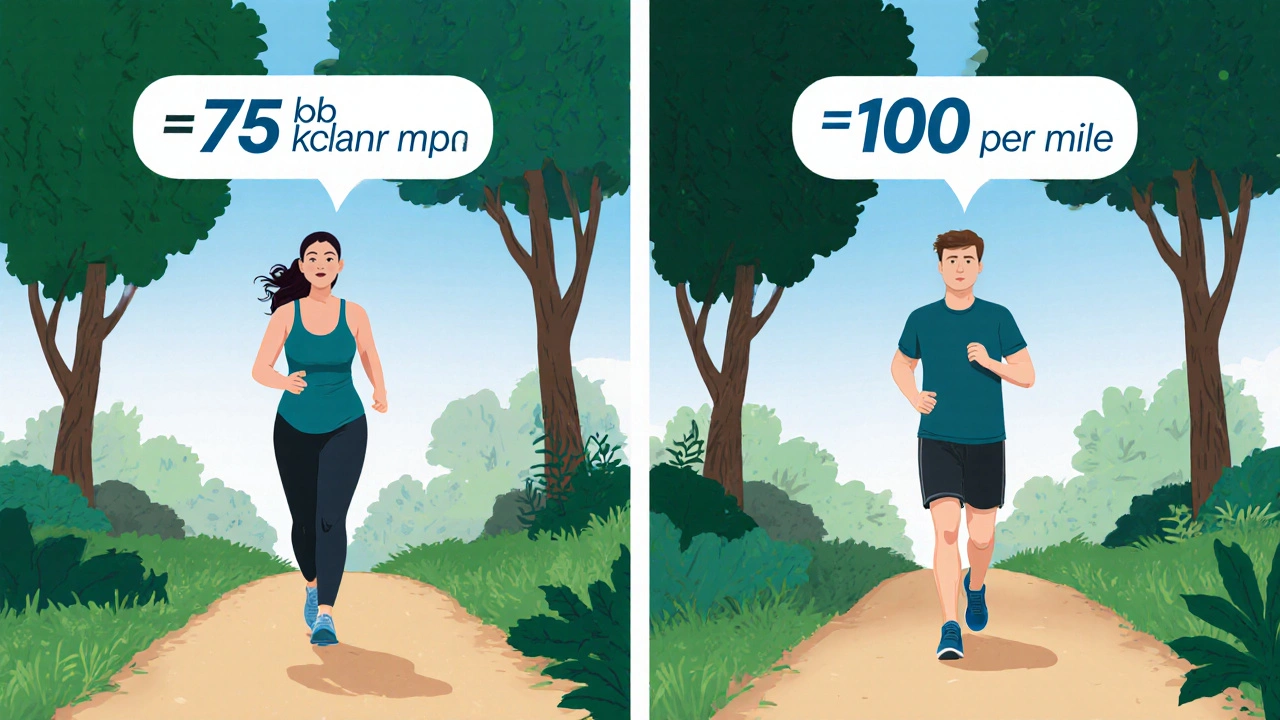Weight Loss Walking Calculator
Calculate Your Walking Mileage for Weight Loss
Determine how many miles you need to walk daily to help lose 5 pounds per week. This calculator uses the principles from the article to estimate your walking mileage needs based on your weight and pace.
The article suggests a daily calorie deficit of 2,500 calories to lose 5 pounds weekly. Typically, 1,300 calories are achieved through walking, and 1,200 through diet adjustment.
Your Input
Results
Enter your weight and pace to see how many miles you need to walk to help achieve your weight loss goal.
Trying to shed five pounds every week sounds exciting, but it also raises a lot of questions. How many miles do you really need to walk to lose weight at that pace? Let’s break down the numbers, factor in your personal stats, and give you a realistic game plan you can start today.
The Math Behind Losing 5 lbs a Week
One pound of body fat stores roughly 3,500 calories. To drop five pounds, you need a weekly deficit of about Calorie deficit (the shortfall between calories consumed and calories burned) 17,500 calories.
Spread over seven days, that’s a daily shortfall of 2,500 calories. Most experts agree that creating a deficit larger than 1,000 calories per day is hard to sustain and can compromise nutrition. So, the smarter approach is to combine a moderate calorie cut with a realistic walking routine.
How Many Calories Does a Mile Burn?
Walking burns calories based on three main factors: your weight, walking speed, and terrain. Researchers use the MET (Metabolic Equivalent of Task) system to estimate energy expenditure. One MET equals the oxygen consumption at rest, roughly 1 kcal · kg⁻¹ · h⁻¹.
At a moderate pace (3 mph), walking registers about 3.3 METs. Multiply that by your body weight in kilograms and the hours spent walking, and you get the calories burned.
Here’s a quick illustration: a 70‑kg (154‑lb) person walking for one hour at 3 mph burns approximately 3.3 × 70 ≈ 231 kcal. Since a mile at that speed takes 20 minutes, the same person burns roughly 77 kcal per mile.
Adjusting for Your Body Weight and Pace
Heavier individuals burn more calories per mile because more mass requires more energy to move. Conversely, walking faster raises the MET value, upping the calorie burn per mile.
Below are typical MET values for common walking speeds:
- 2.0 mph (leisurely) - 2.0 METs
- 3.0 mph (moderate) - 3.3 METs
- 4.0 mph (brisk) - 4.5 METs
Use the formula: Calories per mile = MET × weight (kg) × (1 hour / speed (mph))
Plug in your numbers and you’ll see a clear picture of how many miles you need to cover.

Putting It Together: Miles You Need to Walk
Let’s run two scenarios - a 150‑lb person and a 200‑lb person - both walking at 3 mph.
For the 150‑lb (68 kg) individual:
- Calories burned per mile ≈ 3.3 × 68 ≈ 225 kcal per hour. At 3 mph, that’s 225 ÷ 3 ≈ 75 kcal per mile.
- To create a 2,500‑calorie daily deficit, split it: 1,200 kcal from diet, 1,300 kcal from walking.
- 1,300 ÷ 75 ≈ 17.3 miles per day.
For the 200‑lb (91 kg) individual:
- Calories per mile ≈ 3.3 × 91 ≈ 300 kcal per hour. At 3 mph, that’s 300 ÷ 3 ≈ 100 kcal per mile.
- Same split: 1,300 kcal from walking.
- 1,300 ÷ 100 ≈ 13 miles per day.
Those numbers sound intimidating, and that’s why it’s essential to combine walking with a modest calorie reduction, rather than relying on exercise alone.
Tips to Make the Walk Sustainable
- Start with a baseline. Track your daily steps using a smartwatch or phone app. Aim for an extra 2,000 steps (about 1 mile) each week.
- Use interval walking. Alternate 5‑minute brisk sections with 2‑minute easy recovery. This boosts your MET value without making the walk feel endless.
- Incorporate hills or stairs. Elevation raises the effort factor by 10‑20 %.
- Stay hydrated. Dehydration can make perceived effort feel higher, causing you to cut walks short.
- Monitor heart rate. Staying in the 50‑70 % of your maximum heart rate zone ensures you’re burning fat efficiently.
- Pair walks with everyday tasks. Park farther away, walk around the block before meals, or use a treadmill desk.

When Walking Alone Isn’t Enough - Role of Diet & Clinics
Even a disciplined walking routine can fall short if your food intake stays the same. A modest reduction of 300‑500 kcal per day-think swapping a sugary drink for water or trimming portion sizes-can shave off a few hundred calories without feeling deprived.
Many people turn to professional Weight loss clinic (a medical center offering personalized diet, exercise, and behavioral coaching) for guidance. Clinics can calculate your Basal Metabolic Rate (BMR) and design a plan that aligns walking mileage with realistic calorie targets.
Remember, rapid weight loss can affect muscle mass and metabolic health. Incorporating strength training twice a week helps preserve lean tissue, keeping your BMR from dropping too low.
Quick Reference Table
| Pace (mph) | Weight (lb) | Calories per Mile | Miles Needed per Day (≈1,300 kcal walking) |
|---|---|---|---|
| 3.0 | 150 | 75 | 17.3 |
| 3.0 | 200 | 100 | 13.0 |
| 4.0 (brisk) | 150 | 112 | 11.6 |
| 4.0 (brisk) | 200 | 150 | 8.7 |
| 2.0 (leisure) | 150 | 50 | 26.0 |
These figures are estimates. Adjust for terrain, wind, and personal fitness level.
Frequently Asked Questions
Can I lose 5 lb a week just by walking?
It’s possible only if you combine a sizable calorie cut with a high walking volume-often 13‑17 miles per day for most adults. Most health professionals recommend a slower, safer rate of 1‑2 lb per week.
How does my BMI affect the miles I need?
Higher BMI usually means higher body weight, which raises calories burned per mile. So, people with higher BMI need fewer miles to hit the same calorie target, but the overall health impact of rapid weight loss must be considered.
Should I track steps or distance?
Distance ties directly to calorie burn calculations, while steps are a handy proxy. Aim for at least 15,000 steps per day if you’re targeting the mileage numbers shown above.
What role does heart rate monitoring play?
Keeping your heart rate in the 50‑70 % of max ensures you’re in the fat‑burn zone, optimizing the calories you expend without over‑taxing your cardiovascular system.
Can a weight loss clinic help me walk more effectively?
Yes. Clinics can provide a personalized BMR calculation, nutrition plan, and a structured walking program that fits your schedule and health profile.
Is it safe to walk 15+ miles daily?
For fit individuals without joint issues, it can be safe if you increase mileage gradually, wear proper shoes, and incorporate rest days. Those with knee or foot problems should seek professional advice before attempting such volume.
Walking is a powerful, low‑impact tool for weight loss, but achieving a five‑pound weekly drop demands a blend of calorie control, realistic mileage, and often professional support. Use the math, adjust to your body, and stay consistent-your scale will reflect the effort.
